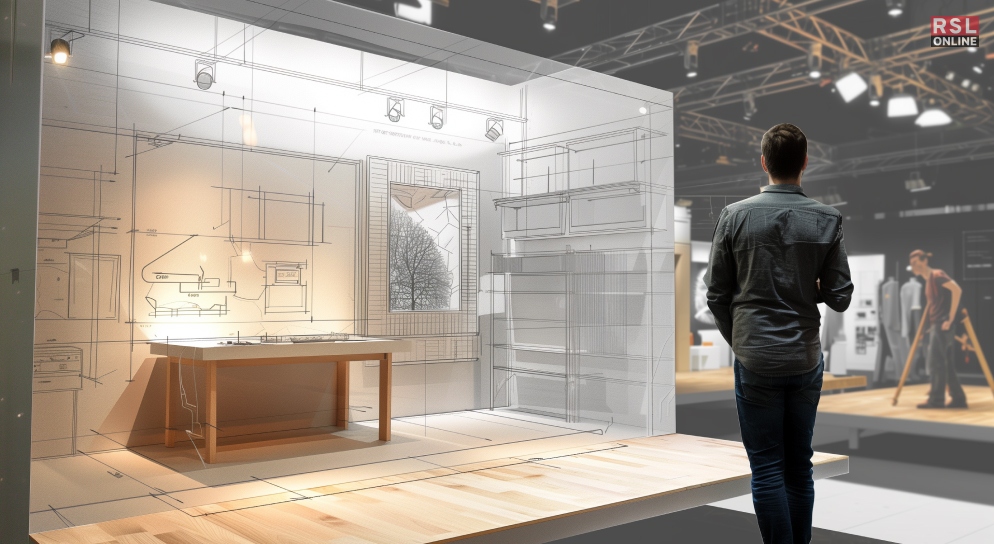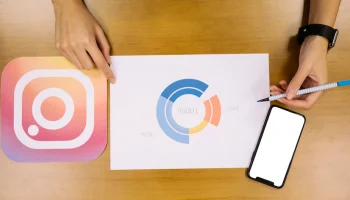Trade shows are one of the most effective ways to showcase your brand, products, and services to a large and targeted audience. However, trade show marketing is not as simple as setting up a booth and handing out brochures. You need to plan, execute, and measure your trade show marketing strategy to get the most out of your investment.
In this article, I will cover everything you need to know about trade show marketing, from defining your goals and budget, to designing your booth and materials, generating leads and sales, and following up and evaluating your results.
So, whether you are a beginner or a seasoned trade show marketer, you will find some useful tips and ideas to make your next trade show a success. If that is something that you want to know, I have you covered! Keep on reading this blog till the end to learn more…
What is Trade Show Marketing?

Trade show marketing is promoting your brand, products, and services at a trade show. In this event, businesses and organizations in a specific industry gather to exhibit and network with potential customers, partners, and media.
Additionally, trade shows are usually held in convention centers, hotels, or other venues and can last from one to several days.
Trade show marketing can help you achieve various objectives, such as:
- Increasing brand awareness and recognition
- Launching new products or services
- Generating leads and sales
- Building relationships with existing and potential customers
- Establishing your authority and credibility in your industry
- Learning from your competitors and industry trends
- Getting feedback and insights from your target market
- However, trade show marketing also comes with some challenges, such as:
- High costs and risks
- Intense competition and noise
- Limited time and attention span of attendees
- Difficulty in measuring and proving ROI
Therefore, you need to have a clear and realistic trade show marketing plan that aligns with your overall marketing and business goals, maximizing your opportunities and minimizing your challenges.
How to Plan Your Trade Show Marketing Strategy?

The first step in trade show marketing is to plan your strategy, which involves setting your goals, choosing your trade show, defining your budget, and selecting your team.
1. Setting Your Goals
Firstly, before you decide to participate in a trade show, you need to have a clear idea of what you want to achieve and how you will measure your success. Your trade show marketing goals should be SMART, which stands for Specific, Measurable, Achievable, Relevant, and Time-bound.
Some examples of SMART trade show marketing goals are:
- Generate 100 qualified leads and ten sales within one month after the trade show
- Increase brand awareness by 50% among the trade show attendees
- Launch a new product and get 20 pre-orders and 50 sign-ups for a free trial
- Build relationships with ten potential partners and five media outlets
Moreover, having SMART goals will help you focus your efforts and resources and evaluate your performance and ROI.
2. Choosing Your Trade Show
Secondly, the next step is to choose the right trade show for your brand and goals. Besides, there are thousands of trade shows across various industries and locations. Therefore, you need to do some research and analysis to find the best fit for your needs.
Some factors to consider when choosing a trade show are:
- size, scope, and reputation of the trade show
- profile, number, and quality of the attendees
- cost and availability of the booth space and other services
- location, date, and duration of the trade show
- compatibility and alignment with your brand and goals.
You can use online directories, industry associations, trade publications, and word-of-mouth to find and compare trade shows. Additionally, you can visit some trade shows as an attendee before you decide to exhibit to get a firsthand experience and impression of the event.
3. Defining Your Budget
Thirdly, participating in a trade show can be expensive, so you need to have a realistic and detailed budget that covers all the costs and expenses involved. Some of the common trade show marketing costs are:
- Booth space rental and fees
- Booth design, construction, and transportation
- Trade show marketing materials, such as brochures, banners, giveaways, etc.
- Booth equipment, furniture, and supplies
- Staff travel, accommodation, and per diem
- Staff training and incentives
- Pre-show and post-show marketing and promotion
- Trade show registration and insurance
In essence, you should also allocate some contingency funds for unexpected costs or emergencies. You should track and monitor your spending and compare it with your expected ROI.
4. Selecting Your Team
Finally, selecting and training your team is the last step in planning your trade show marketing strategy. Moreover, your trade show team is the face and voice of your brand at the event. Therefore, you need to choose the right people and prepare them well.
When it comes to choosing your team, you must choose people who:
- are knowledgeable, enthusiastic, and professional
- have good communication, presentation, and interpersonal skills
- can handle different types of attendees, such as prospects, customers, partners, media, etc.
Additionally, ensure that you train your team on the following things:
- brand, products, services, and goals
- your booth design, layout, and features
- your trade show marketing materials and messages
- how to greet, qualify, engage, and follow up with attendees
- to handle objections, questions, and complaints
- how to collect and record leads and sales
- to work together and support each other
You should also motivate and reward your team for their performance and feedback.
How to Design Your Trade Show Booth and Materials?

The second step in trade show marketing is to design your booth and materials, which involves creating a booth concept, designing a booth layout, and producing your trade show marketing materials.
1. Creating a Booth Concept
Firstly, your booth concept is the theme and message you want to convey to your trade show attendees. Your booth concept should be:
- Consistent with your brand identity and values
- Relevant to your trade show goals and audience
- Unique and memorable to stand out from the crowd
- Simple and clear to communicate your value proposition
- Engaging and interactive to attract and retain attention
Some examples of booth concepts are:
- A mini store that showcases your products and allows attendees to try and buy them
- Game or contest those challenges and reward attendees for their skills or knowledge
- Demonstration or presentation that educates and entertains attendees about your products or services
- Lounge or cafe that offers a comfortable and relaxing space for attendees to network and chat
2. Designing a Booth Layout
Secondly, your booth layout is the physical arrangement and organization of your booth elements, such as your walls, banners, displays, tables, chairs, etc. Your booth layout should be:
- Functional and practical to accommodate your booth activities and traffic
- Aesthetic and appealing to create a positive and professional impression
- Ergonomic and comfortable to ensure the safety and well-being of your staff and attendees
- Flexible and adaptable to suit different booth sizes and shapes
Additionally, when it comes to designing the booth layout, you can use the following:
- Rule of thirds to divide your booth space into three zones: the front, the middle, and the back
- Front zone to attract and welcome attendees with your logo, slogan, and main message
- Use the middle zone to engage and interact with attendees with your displays, demos, games, etc.
- Back zone to close and follow up with attendees with your brochures, giveaways, etc.
- Vertical space to maximize your visibility and branding
- Colors, lights, and sounds to create contrast and interest
- Signs and graphics to guide and inform attendees
- Furniture and plants to create a cozy and inviting atmosphere
3. Producing Your Trade Show Marketing Materials
Thirdly, your trade show marketing materials are the tangible and intangible items that you use to promote your brand, products, and services at the trade show.
Your trade show marketing materials should be:
- Aligned with your booth concept and layout
- Complementary to your pre-show and post-show marketing
- Informative and persuasive to educate and convince attendees
- Valuable and useful to provide benefits and incentives to attendees
Some examples of trade show marketing materials are:
- Brochures, flyers, catalogs, and business cards that provide detailed information about your brand, products, and services
- Banners, posters, and stickers that display your logo, slogan, and main message
- Displays, videos, and slideshows that showcase your products and services in action
- Giveaways, samples, and coupons that offer free or discounted products or services to attendees
- Testimonials, reviews, and case studies that demonstrate your customer satisfaction and success stories
- Social media, email, and SMS connect and communicate with attendees before, during, and after the trade show.
Moreover, you should also consider using digital and interactive trade show marketing materials, such as QR codes, NFC tags, apps, and games, that can enhance your engagement and measurement.
How to Generate Leads and Sales at Trade Shows?

The third step in trade show marketing is generating leads and sales at trade shows, which involves attracting, qualifying, engaging, and following up with your attendees.
1. Attracting Attendees
The first step in generating trade show leads and sales is attracting attendees to your booth. It would help if you created a strong, positive first impression, capturing their attention and interest.
In order to attract the attention of the attendees, you can use:
- Eye-catching and appealing booth design and materials
- Catchy and compelling headlines and slogans
- Incentives and offers that entice and reward attendees
- Referrals and word-of-mouth from your existing customers and partners
- Pre-show marketing and promotion to create awareness and anticipation.
2. Engaging Attendees
Secondly, you need to create a positive and lasting impression that builds trust and rapport. To engage the attendees, here are some of the things that you can use:
- Open-ended questions and active listening to understand their needs, challenges, and goals
- Features and benefits statements and stories to demonstrate how your products or services can solve their problems and add value
- Social proof and authority to establish your credibility and reputation
- Urgency and scarcity to create a sense of FOMO (fear of missing out) and motivate them to take action
- Humor and personality to make them feel comfortable and entertained.
3. Following Up with Attendees
Finally, in order to generate leads for your product, it is important that you follow up with your attendees after your event or the trade show has ended. You must maintain and nurture the relationship you started at the booth.
If you want to follow up with the attendees, here are some of the things that you can use:
- a CRM (customer relationship management) system to organize and manage your leads and sales
- multi-channel approach to communicate with your leads and sales, such as email, phone, social media, etc.
- personalized and timely message to remind them of your brand, products, and services, and the value proposition that you offered
- clear and compelling call to action to prompt them to take the next step in the buyer’s journey. For instance, it can include requesting a quote, scheduling a demo, placing an order, etc.
- a feedback and referral system to collect and improve customer satisfaction and loyalty and generate more leads and sales.
How to Evaluate Your Trade Show Marketing Results?

The last step in trade show marketing is to evaluate your results, which involves measuring, analyzing, and reporting your trade show marketing performance and ROI.
1. Measuring Your Performance
Firstly, you need to have key performance indicators (KPIs) aligning with your marketing goals. Some examples of trade show marketing KPIs are:
- The number and quality of leads and sales generated
- Cost per lead and cost per sale
- Conversion rate and average order value
- Revenue and profit generated
- Brand awareness and recognition
- Customer satisfaction and loyalty
Additionally, you need to have some tools and methods to collect and track your trade show marketing data, such as:
- Lead capture and management software
- Online and offline surveys and polls
- Social media and web analytics
- Sales and CRM systems
2. Analyzing Your Results
Secondly, you need to compare your actual performance with your expected performance and identify the gaps and opportunities for improvement. Furthermore, it would be best if you also considered the external and internal factors that may have influenced your results, such as:
- quality and quantity of the trade show attendees
- level and type of competition and noise
- effectiveness and efficiency of your booth and materials
- skills and motivation of your team
- timing and frequency of your follow-up.
3. Reporting Your Results
Finally, to report your trade show marketing results, you need to have a clear and concise report summarizing your marketing objectives, activities, outcomes, and insights. Your report should include:
- An executive summary that highlights your main achievements and challenges
- Detailed breakdown of your trade show marketing KPIs and ROI
- SWOT (strengths, weaknesses, opportunities, threats) analysis of your trade show marketing performance
- A list of recommendations and action plans for future trade show marketing improvement.
- Additionally, you should also share your report with your stakeholders, such as your management, team, customers, partners, and media, and solicit their feedback and suggestions.
Wrapping It Up!
Trade show marketing is a powerful and profitable way to promote your brand, products, and services to a large and targeted audience. However, trade show marketing requires a lot of planning, execution, and measurement to ensure its success and ROI.
In case you were searching about what trade show marketing is, I hope that this blog has been of help to you. If you have any other queries related to the same, please feel free to let me know. All you need to do is scroll down until you reach the bottom of the page. Then, leave your comment in the box below. And I will be there to answer them all for you!
Read Also:




























